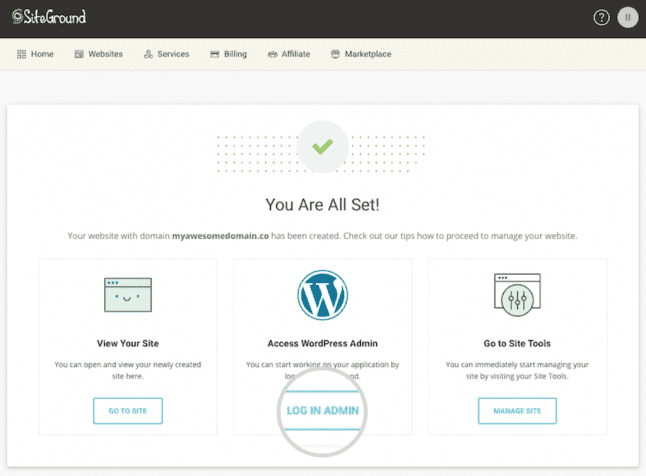Disclosure. This page contains some links to other websites, which if you click and sign up, will lead to a commission for us. Jennifer has assessed the viability of the information provided, however, please assess for your needs based on your current experience and efforts with technology.
You are probably thinking of creating a book website, but here I am going to tell you why you need to start an author blog instead. You will use this author website when you upload new books, ‘social share’ your articles, and put your ‘media mentions’ or ‘media kit’ page together.
Rolling with the times, your personal brand will grow and change. If you set up a ‘book’ domain and website, unless you have some expert support, you may not have enough time to justify this approach. Websites take time and work to establish and get indexed effectively, and book launch promotions are time limited.
But… with your Author Website, the site can be added to and morph over a decade or so, as you launch more ‘products’ for your growing number of fans.
Journalists and editors can also find it more easily, especially if it is on press releases/emails. As soon as people hear about you somewhere, they can Google your name or company, and find the website quick smart.
Author Blog Design recommendations
If you want to continually add and share articles, direct people to find out more about you, and add a bookstore, then WordPress hosted on your domain name is the best bet. Registering your Domain Name yourself means you always know where it is and when it is due. I recommend using Netregistry, if an Australian, for your domain names. I have used them (or their predecessor) for 15 years!
You’ll need website hosting for this, unless you are running with a blog like WordPress.com (premium add-ons!), Blogger.com or all-in-one host like SquareSpace.
Website hosts like HostGator or Siteground offer a simple control panel, letting customers set up WordPress with one click. Others offer installation for a small fee. You need to be a little technical savvy!
Which Hosting Plan to choose?
On any plan, Siteground can migrate your old website over with the auto-migrator (plugin). The bigger plans get the professional website transfer service. You can start off with a cheap plan, for one site, which is now from $4.95 + GST each month.
The reason I recommend the WordPress Hosting at Siteground is the uptime, service, and value-for-money.
With the Server based in Singapore, you want the Ping speed to be lightning fast. It’s way better there, with 3 seconds load for this one, 4-5 seconds for sub site. However, the real speed of retrieval depends on a few factors, like the location of the viewer.
In 2017, I switched to Siteground. I just love these guys! They hide the support link at the bottom, but the staff are expert when you do ask a tricky question. They also take care of the transfer and you can manage all your domain hosting from one login. Phew.
Like many, their first year PRICING is about one-third the price of the second year. I got the GrowBig option as I have multiple sites, but you can try the smaller one (Startup) if you have ONE website. Just remember to budget for next year’s hosting, at higher prices.
Deciding on a Theme
Deciding on a theme can be a living nightmare. Like a complex design skin, the WordPress Theme lets you customise to your desired navigation styles, colours, sidebars, header images, normal page as a home page, blog widgets, etc. About 8 hours and 40 theme options later, your head is spinning! So let me recommend an option based on the experiences I’ve had.
We found that the choice of a supported, paid ‘pro theme’ is a good idea. This is because they are updated regularly, while free themes may be left to break and, basically, die.
Side Note: A WordPress.com site is not the same as a self-hosted domain.
Introducing Impreza

For eight years I used this adaptable, retina responsive Theme for WordPress. Yes, I tried the generic WordPress one, but it did not give the bounty of options.
2) IMPREZA. This popular theme may be customised to any brand colours and menu needed. You can choose layout templates, pick icons, and add eye-catching elements with a page builder… all for US $69. It is responsive to mobile devices, parts can be customised for smaller screens, and it is updated with every WordPress major change.
Loading the Theme is fairly easy — but the place you bought the theme can also install it for a small US$50 fee. You then need some idea of how to customise a theme.
This work is a bit more complex than some people would like, so look around for your best bet – or consider a hosted site (all-in-one) such as GetResponse or SquareSpace.
If you’d like a web developer recommendation, I have two: SVS, Sphenn Stansfield of Auckland, New Zealand (great rates) and Anton Bardin, of Simple Digital, Brisbane, Australia.
With the US dollar exchange rate being what it is, you may prefer to hire an Australian for customisation.

If you DIY, order some vibrant web banners containing your author photo and book cover, of the right size for your desired header image (usually like 1024 wide). Designers can blend several elements together while sticking to your brand colours. You can expect to pay up to US$50 for this banner on Fiverr. Why not get a couple of options?
Consider these three smaller costs (and your time), compared to $3000+ cost of custom website design, and you’ll see why I go this route!
They also give 6 months support with the purchase, which is usually US$34, but is included with above theme. Their page builder works with WordPress Classic and new pages built can be done with WordPress 5 blocks.
Of course, with the many plugins and widgets, a novice will take time to learn how a WordPress website setup actually works. After all these years I still call on technical help for tricky issues. There are Pros who will install your social widgets and plugins that extend the functions on your new site.
Capture your Visitors from the Start
Whether blogger-author or business owner, you’ll want to capture your visitor emails with a valuable offer… we call these ‘lead magnets’. I have one about a Niche Marketing email course and a freelancer rate calculator.
A lot of authors think they’ll just start writing a blog, but forget that 90% of their online visitors will forget about them not long after they visit. A Lead Magnet and email follow-ups allow us to build up a rapport and give value before they make any big decisions, like buying your book. It takes a little while to get used to inserting forms and setting autoresponders, but you will find the best email marketing systems also have the easiest interfaces, like Mailchimp, Aweber or Vision6.
For business authors, I recommend using an email subscriber helper, like Sumo. Sumo lets you have a bright-coloured slide-in, inset, or pop-over that captures email addresses from web visitors.
For Sumo, you get a list builder app and can opt for various types of sign-up forms. But to truly integrate the forms with your email, you’ll need either Zapier rules or use Mailchimp or Aweber. You’ll soon get the ‘upgrade now’ reminder. I just use the free one and it’s fine.
Another option is to use the WordPress plugin Hustle by WPMUdev – a bit harder to set up. A further option is to switch to Thrive Themes.
Author Blog Summary
- Use WordPress on a self-hosted domain (e.g. yourname.com, yourbrand.com.au)
- Blog to steadily promote books, socially share your articles, and upload a media kit (high quality photos of both YOU and the book)
- Put your domain name at the bottom of every press release.
- Designing… put your name URL on your business card, LinkedIn and on email signature. I recommend Canva Business Cards.
- Get your domain name yourself and take note of where the logins and FTP details are kept. Really, write them down in your diary.
- Start with a smaller plan, but always choose one with a SSL option, so both Google bots and people see the secure lock.
- Always get expert help when you’re out of your depth. Try Upwork.
- Use an easy page builder to design your website a bit better. It should come with your theme. Sliders are optional.
- Get an author web banner made – once installed, it will make your blog look customised straight away.
- Capture your visitors with an opt-in form and an offer of a free chapter or email course. Make sure the opt-in form SLIDES in, POPS up, or is at the top. Nobody elects to just sign up.
This recommendation is general in nature and is provided free-of-charge by JenniferLancaster.com.au. Please be sure you are directed to the authentic site and see the little lock when paying online. Do thorough checks before signing up.
Copyright 2022. Jennifer Lancaster.
Disclosure. This page contains some links to other websites, which if you click and sign up, would lead to a commission for us. We have assessed the viability of the information provided above and even use it ourselves, however, please assess your needs based on your current experience and efforts with technology.


